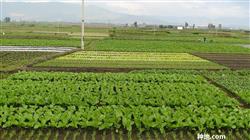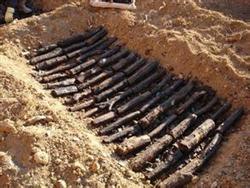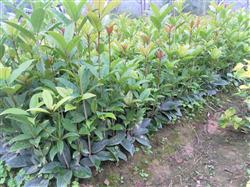How to weed when growing organic vegetables?

How to weed when growing organic vegetables? The biggest headache in organic vegetable production is weed control. " The vegetable farmer of the organic vegetable base said helplessly. Because organic vegetables are not allowed to use synthetic pesticides, fertilizers, herbicides and growth regulators in the cultivation process, the requirements for the inevitable grass damage in the cultivation process are different from those of conventional vegetable cultivation. The use of genetically engineered products and chemical herbicides for weeding in organic vegetables is prohibited. The main weeding measure is artificial weeding. In addition, some auxiliary measures can be taken to reduce weeds. Artificial weeding mainly refers to artificial weeding. Artificial ploughing and weeding has strong pertinence, which can remove not only the weeds between rows, but also the weeds between plants. It is clean and thorough, and the technology is simple. It can not only control weeds, but also provide good growth conditions for vegetable crops. In the whole process of the growth of vegetable crops, artificial ploughing and weeding can be carried out many times according to the needs. When weeding, we should seize the favorable opportunity to get rid of early, small and thorough weeds, so as not to leave weeds, so as to avoid future trouble. Strengthen cultivation management and control weeds by using cultivation techniques that restrict the growth and development of weeds (rotation, planting green manure, fallow, etc.); organic fertilizers should be fully mature (some organic fertilizers contain weed seeds) Making use of the inhibitory effect of previous crops on weeds and the allocation of previous crops, we should pay attention to the inhibitory effect of previous crops on weeds and create favorable production conditions for subsequent crops. Generally, carrots and celery grow slowly and have little effect on restraining weeds. Onions, garlic and root vegetables are also vulnerable to weeds, while pumpkins and wax gourds cover the ground quickly during the growth period, and weeds are easy to be eliminated. Cabbage, potato and turnip also play an important role in inhibiting weeds. Edible brewing vinegar with acidity of 4% to 10% can also be sprayed, which can not only eliminate weeds, but also disinfect the soil, and the effect is better when weeds are young. Straw mulching can not only preserve soil moisture, heat preservation, promote root and fertilize, but also inhibit grass. The whole plant or crop straw is divided into small segments 3 cm long and 5 cm long, which are evenly spread between plant rows and plants. The amount of mulch should be moderate, because too little mulch can not preserve soil moisture and increase yield; if the amount of mulch is too large, the phenomenon of pressing and burning seedlings may occur, and the next sowing may be affected. The coverage per mu is about 400 kg, subject to the strict cover. Straw mulching should also grasp the mulching period. For example, ginger should be covered at the seedling stage after sowing, and be removed when the temperature drops in the first and middle of September; garlic can be covered during the whole growing period in summer and autumn. Turn the straw into the sun before mulching, and control insects and weeds in time after mulching. In addition, the border surface can also be covered with waste newspapers, which can play a better role in inhibiting grass. Plastic film mulching to inhibit weeds: plastic film mulching is used to improve the quality of plastic film mulching, generally good mulching quality and less weed growth. When covering the plastic film, it should be tightened and paved to close to the ground. If the quality of the plastic film is not good, it is not only easy to vent and leak, but also has poor effect of heat preservation, water and fertilizer preservation, and will promote the growth of weeds. Mulching with black plastic film has the best effect on weeding, but weeding can not be covered with herbicidal plastic film (because it contains chemical herbicides). Mechanical weeding is the use of various forms of weeding machinery and topsoil machinery to cut off grass roots, interfere with and restrain the growth of weeds, and achieve the purpose of controlling and removing weeds. Mechanical weeding is more advanced than artificial weeding, and its work efficiency is high, but its flexibility is not strong. This method is generally used in farms with high mechanical degree. Shallow loosening and weeding: mechanical loosening and weeding with a shallow loosening machine before sowing, with a loosening depth of 5cm to 6cm. Through shallow pine, about 70% of the annual weeds are killed, leaving some weeds that are difficult to remove, which can be artificially weeded at the seedling stage. Rotary tillage or rotary sowing to kill weeds: use rotary tillers to kill weeds with rotary tillers before sowing or when sowing. The depth of rotary tillage or rotary sowing is generally 6cm to 8cm. After rotary ploughing or rotary sowing, about 75% of the weeds are killed, and the large weeds that grow at the seedling stage can be weeded manually. Intertillage weeding: the weeding depth is 3cm for shallow root crops and 5cm for deep root crops with intertillage weeding machine or fertilizer weeding machine at seedling stage. More than 95% of the weeds in the field can be removed, and the remaining weeds can be weeded manually. After the first emergence peak of the main weeds, when the crop seedlings are not easy to be buried in the soil, take advantage of the sunny day as soon as possible. The need for the second mechanical weeding should be done before the ridge closure of the strip sowing crops. Deep loosening weeding: mainly for deep-rooted crops with wide row spacing, subsoiling machine is used for deep loosening and weeding. The weeding depth of deep loosening is generally 25cm to 30cm. More than 95% of the weeds in the field can be removed, and the remaining weeds can be weeded manually. It is suitable to choose in autumn. Click to get mass herbicide use technology click to get mass pesticide application technology click to get massive vegetable planting technology
- Prev

Key points of cultivation of Gastrodia elata
In summer and autumn, Gastrodia elata enters a period of exuberant growth and maturity, and it is also a key period of production management of Gastrodia elata. 1. The gutter drains moisture. Gastrodia elata enters the vigorous growth period, at this time should begin to check whether the drainage ditch of the cultivation site is stagnant water.
- Next

How do sweet-scented osmanthus reproduce asexually?
How to cut and raise seedlings of sweet-scented osmanthus trees? The method is how to raise seedlings by cutting of sweet-scented osmanthus trees: one. Bed insertion is prepared to select light loam farmland for deep ploughing to make a bed. Guishu requires a bed width of 120 cm, a bed height of 25 cm and a channel width of 40 cm. The soil is fine, the bed surface is flat and the channel is smooth. Cover the top of the slotting bed.
Related
- Fuxing push coffee new agricultural production and marketing class: lack of small-scale processing plants
- Jujube rice field leisure farm deep ploughing Yilan for five years to create a space for organic food and play
- Nongyu Farm-A trial of organic papaya for brave women with advanced technology
- Four points for attention in the prevention and control of diseases and insect pests of edible fungi
- How to add nutrient solution to Edible Fungi
- Is there any good way to control edible fungus mites?
- Open Inoculation Technology of Edible Fungi
- Is there any clever way to use fertilizer for edible fungus in winter?
- What agents are used to kill the pathogens of edible fungi in the mushroom shed?
- Rapid drying of Edible Fungi

